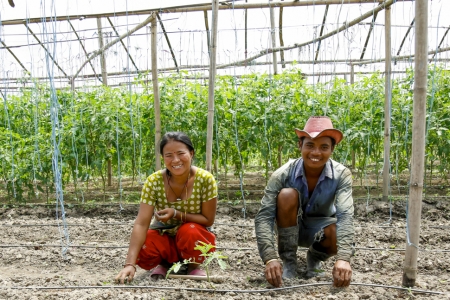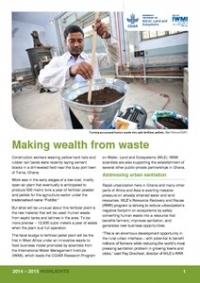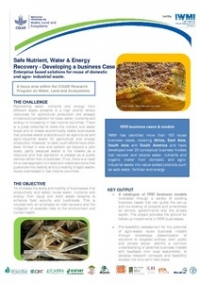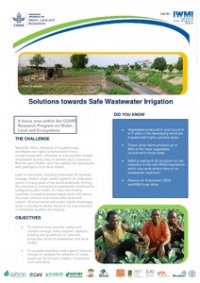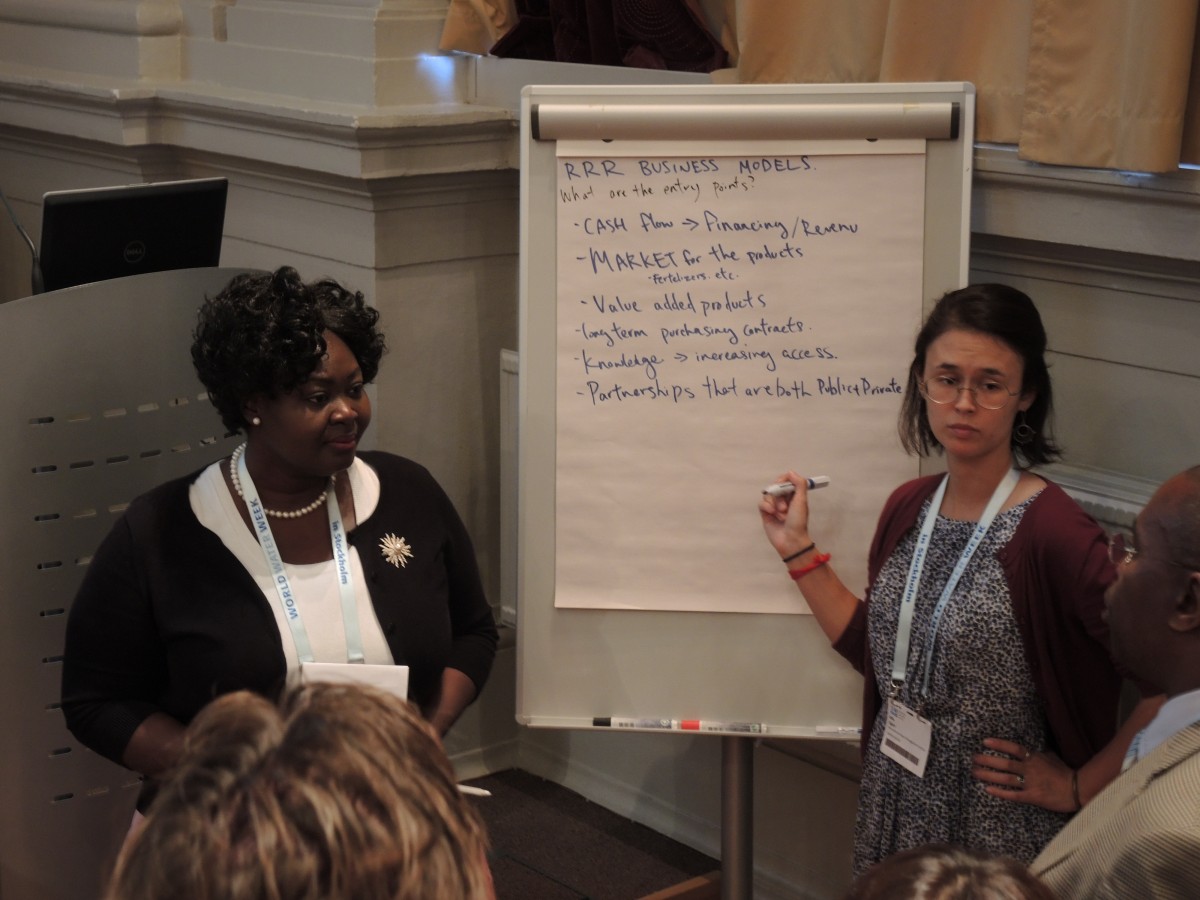
Reduce, reuse, recycle – the mantra of my childhood conjures memories of slightly gray recycled paper plates—the kind that would appear at picnics hosted by my parents’ environmentally conscientious friends.
The recycling of waste is still a hot topic and is increasingly fashionable due to the popularity and public advocacy of “circular economies,” but these concepts are not new. According to Miriam Otoo of the International Water Management Institute (IWMI), waste has been repurposed for centuries as a means of increasing the availability of resources (energy, water and nutrients). Composting food waste and using human excreta as a means of replenishing critically important nutrients for agriculture—like nitrogen and phosphorus—are tried-and-true practices.
Presenting at Stockholm World Water Week (SWWW) on behalf of her team at IWMI, Miriam said that this kind of reuse of resources is more important now than ever before. The earth’s rapidly increasing human population has coupled with huge influxes of people into cities to generate a tremendous amount of waste and create a growing sanitation challenge in urban areas. These population stresses have also put a strain on the global supply of the chemicals necessary for agriculture: our supply of phosphorus, for example, is diminishing at an alarming rate and can’t afford to be wasted.
“Every year, one third of the world’s food goes to waste,” said Miriam. “This is not only hugely economically inefficient, but valuable resources like energy, carbon and nutrients, are not captured. This food waste also represents a huge contribution to greenhouse gas emissions.”
These realities have been recognized by the global community and are featured prominently in the Paris climate agreement and the Sustainable Development Goals (SDGs). Resource recovery has a huge role to play in achieving the SDGs - especially #6 on water management and sanitation, #11 on inclusive, resilient and sustainable cities, and #12 on sustainable consumption and production patterns.
Old technologies, new approaches
Miriam and others, like Jo Burgess from from the Water Resource Commission of South Africa, are taking a fresh look at tried and tested (and also at new and innovative) ways of reusing waste for productive means.
Jo emphasized the need to have a vision and identify specific purposes for the things that are recovered from the Resource Recover and Reuse (RRR) process. For instance, the processes and standards that are needed to provide safe drinking water are very different from those that are needed for water that is meant for irrigation or aquaculture. Identifying those purposes from the very beginning of the waste collection process saves a great deal of money and effort, making RRR more economically and environmentally viable.
An economist herself, Miriam and the RRR team at IWMI are working to develop business models for different parts of the resource recovery value chain. During the session at SWWW, participants helped to brainstorm on how to scale up these business initiatives.
Although the idea is to set up the various parts of the resource recovery value chain as “businesses,” the target is more to maximize cost recovery than profits. Therefore, it remains important to have both private and public sector partners involved in such projects. If the supply of waste is to be consistent, safe, and reliable, working with local government agencies that are involved in waste management is indeed crucial.
In addition, the products that are made out of the waste have to a) have a viable market and b) be competitive within that market. How can waste-based fertilizers compete with commercial chemical fertilizer companies that have strong lobbies and more financial resource investments? Since the availability of sustainable products is rarely enough incentive for people to pay more, the products and process may have to be supported or subsidized by governments or donors until they become well established. Several countries, like India, are now asking fertilizer retailers to sell a certain amount of compost with every sack of chemical fertilizer.
As with most other issues in development and markets, context and demand are very important to consider. For instance, locations that are plagued with water scarcity may be willing to use and even pay for treated wastewater, while people living in water rich areas will have zero incentives to support these types of initiatives.
Transparency of information is also an issue with market-based solutions. How can you get companies to share information about their failures when their reputations are at stake? More importantly, how can you encourage them to share their successes, when those are what they rely on to turn a profit? Some ideas were to make initial seed funding contingent on a set amount of transparency and knowledge sharing. Communicating the successes of a business could also act as a form of advertisement, contingent on good messaging.
A poo makeover: changing mindsets
Another major issue with RRR is the stigma that is associated with waste-based products, especially things like fertilizer made from fecal pellets or recycling urine for hydroponics and aquaculture. The acceptability and safety of these products have to be proven and well communicated.
Many participants called for better case studies and success stories that could be shared to get the word out. If governments and private companies have the opportunity to see successful cases of RRR in action, then they would be more willing to support and invest in these initiatives. By extension, consumers would start to see these products and processes as more acceptable. Mainstreaming is the key.
“Messaging and communication are hugely important,” said Stefan Uhlenbrook from the UN World Water Assessment Programme (WWAP). “For instance, in Singapore, treated wastewater is marketed as ‘NEWater.’ While all water on earth is reused over and over again, somehow the concept of using treated wastewater is often viewed as unsavory or unclean. ‘NEWater’ as a brand is a great example of giving something that seems potentially unfavorable a fresh identity.”
“The innovations that need to take place in order to make this sector viable are not only engineering or scientific innovations,” said Matthew Ries of the Water Environment Federation. “Success lies in the hands of economists, communicators and social scientists, who will help to change perceptions in government, and by companies and consumers to make resource recovery the new norm.”



